Although the dragonfly season lasts for about six months, the flight season of each species is shorter, often only a few weeks. Chasers, emperors and some damselflies have now disappeared and won’t be seen again until next spring. Late summer and early autumn are the best time to see hawkers and darters on the wing and a couple of damselflies will still be around.
Darters are very common and often perch on flat surfaces, such as our boardwalks, taking brief flights before returning to the same spot. The Common Darter is our commonest dragonfly, emerging in June and flying well into autumn. Immature specimens of both sexes are mainly yellow. Males are orange-red and females are brownish, becoming darker with age. Both sexes have yellow lines along their legs.
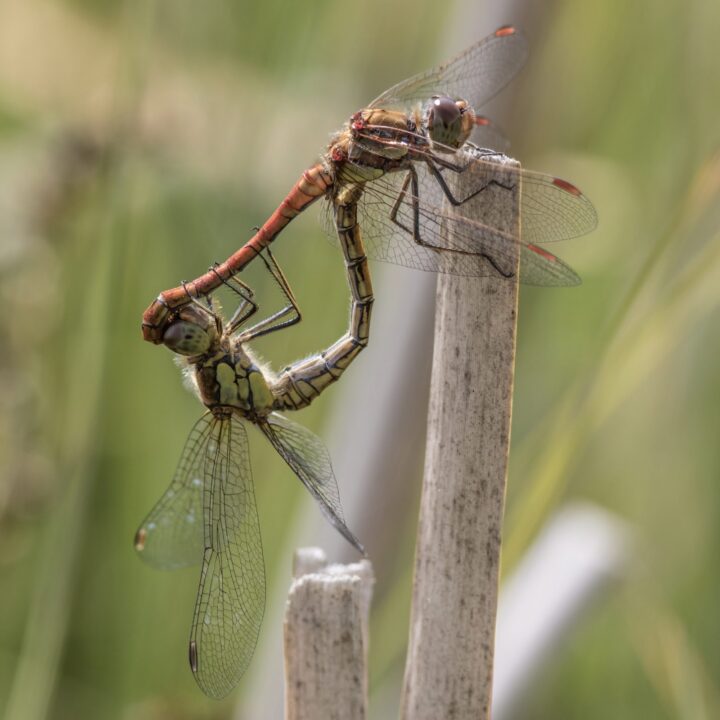
A similar-looking dragonfly is the Ruddy Darter and it is also fairly common. Male Ruddy Darters are deeper blood red with a red face and females are mainly yellow. Both sexes have black legs.
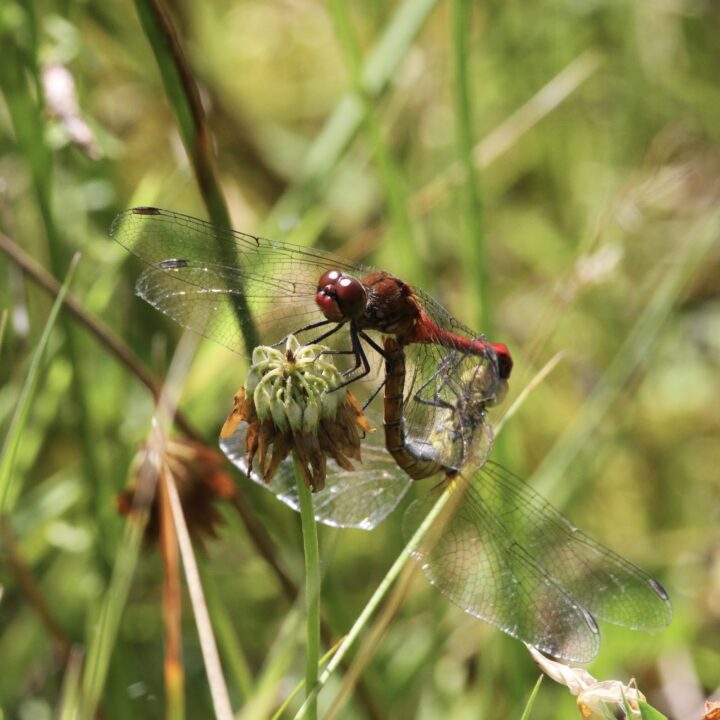
A rarer species is the Black Darter, our smallest dragonfly, mainly found in upland acid waters although it has been recorded at Gosforth Nature Reserve. The best place to see Black Darters locally is Slipper Tarn in the Cragside Estate near Rothbury.
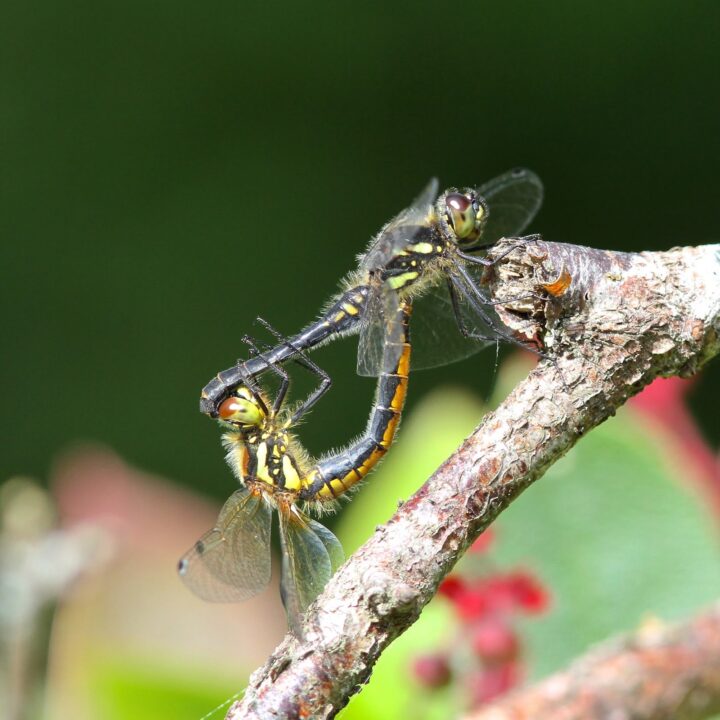
Late summer and autumn is the time to look for hawkers, large blue dragonflies that fly for long periods. Males patrol territories over the water but females usually only go back to the water for mating and egg-laying. Southern Hawkers are often seen flying around the garden at Lake Lodge, hunting for insects. Males are lime green and blue and females lime green and brown. Both are inquisitive and will often approach quite closely.
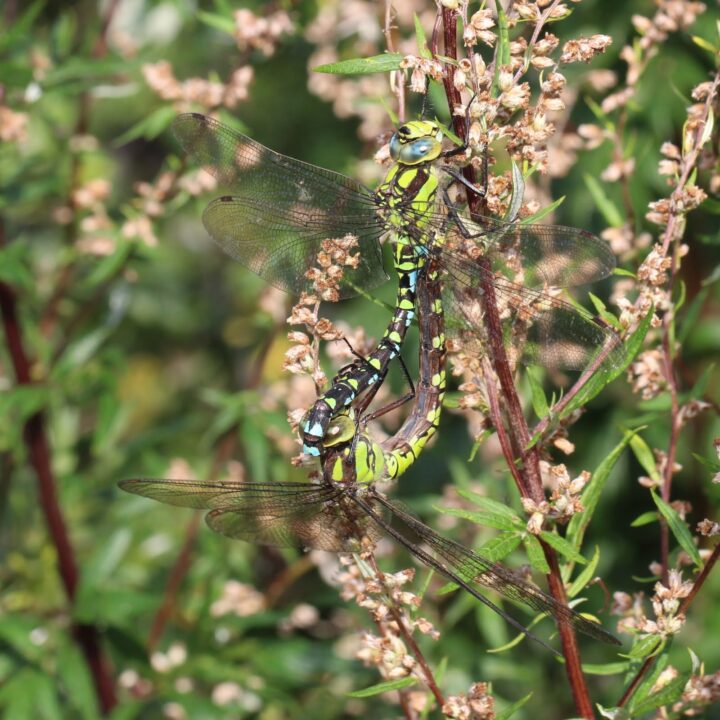
Common Hawkers are less common, except in upland acid waters – their other name is Moorland Hawkers. Males are blue and black and look dark on the wing. Females are mainly brown. Both sexes have a gold leading edge to the wings (the costa) – an important identification point.
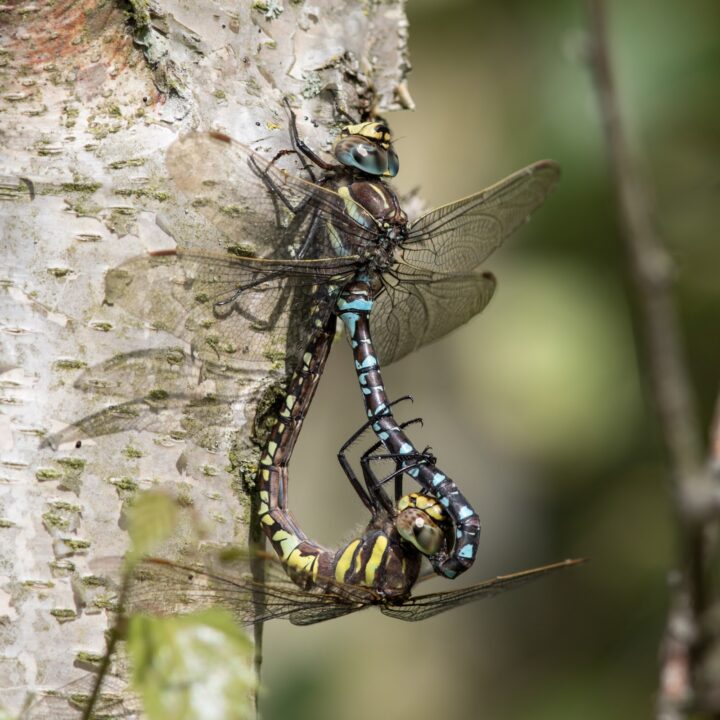
Despite their name, Migrant Hawkers are resident and are the commonest hawkers in Gosforth Nature Reserve. Their colours are similar to common hawkers but they are smaller and have a brown edge to the wings. Males are often seen perched in the reedbeds.
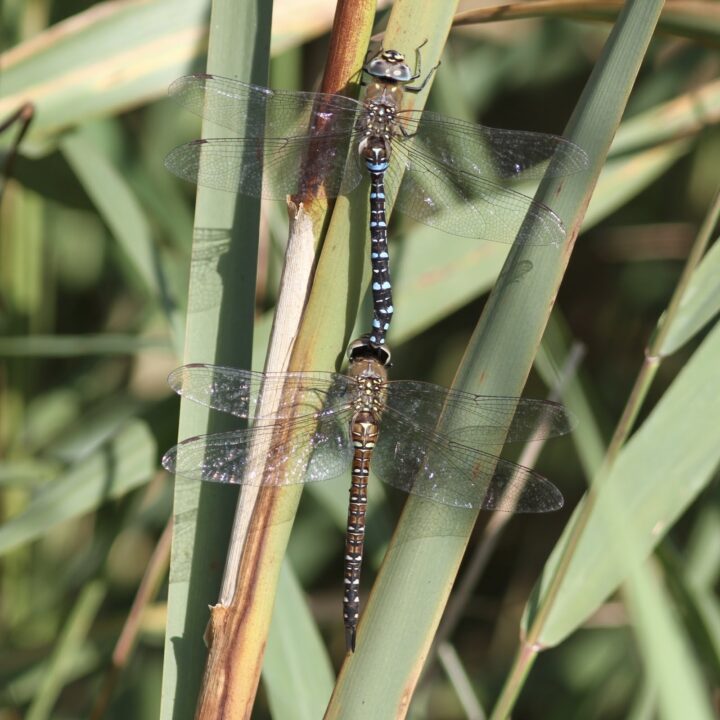
Common Blue Damselflies have long flight season and will be around until September. Males are blue and females green.
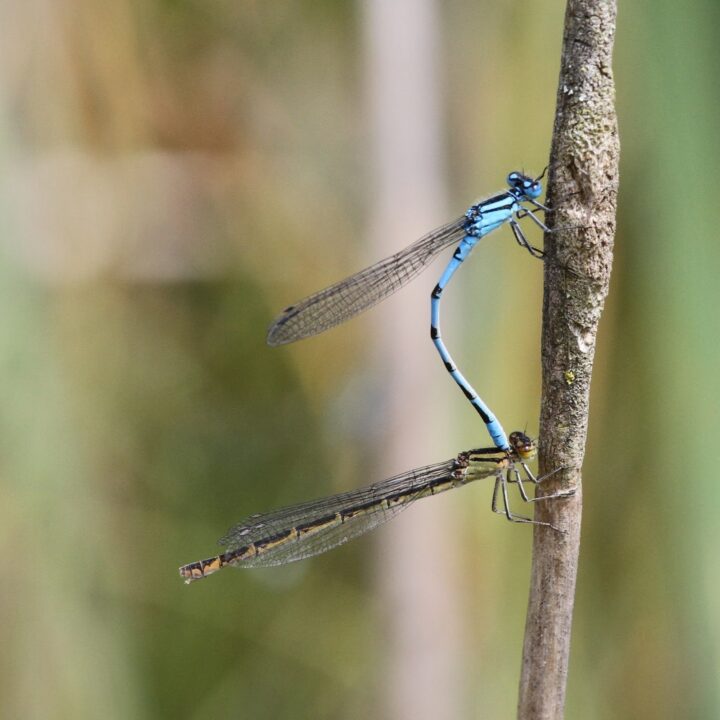
Emerald Damselflies are the last species to emerge in June and will be around until early September. Males are green and blue, females green and bronze. Unlike most other damselflies, these characteristically perch with spread wings.
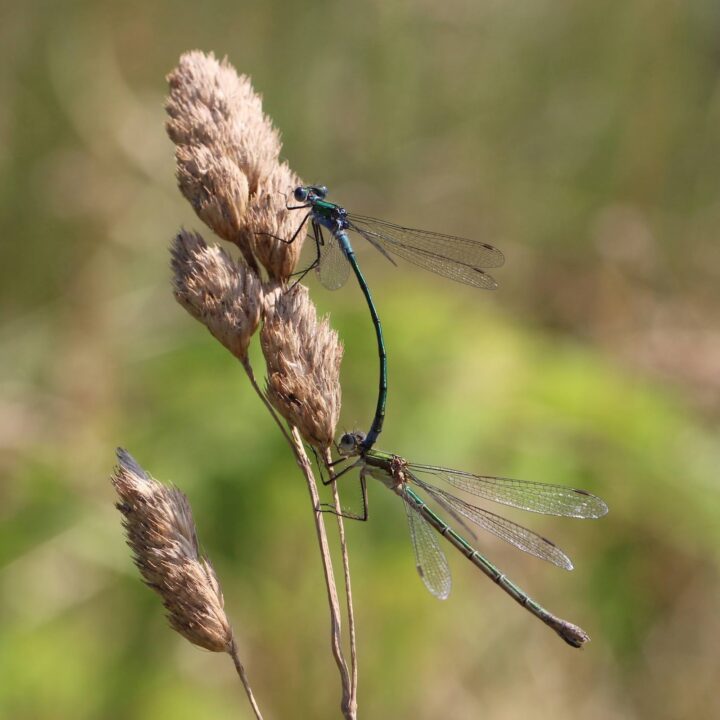
Make the most of these late-season dragonflies and damselflies as they will soon be gone. Then we will have to wait until late April next year before the first Large Red Damselflies.
By Christopher Wren, local naturalist
© All photos included within this post are subject to copyright to the author, Christopher Wren, 2020